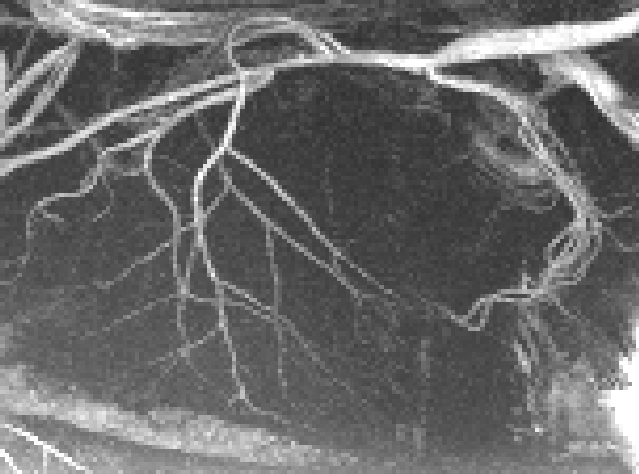Longitudinal Analysis of the Cerebral Vasculature in Diabetic Rats
 Figure 1: Maximum intensity projection of a 3D TOF-MRA showing the cerebral vessels of a diabetic rat.
Figure 1: Maximum intensity projection of a 3D TOF-MRA showing the cerebral vessels of a diabetic rat.
|
Project Description
Many diseases are suspected to affect the morphology of the cerebral vasculature. Biomedical or pharmacological studies that aim to answer such questions often use mouse or rat models in their experiment and acquire in-vivo images of the vasculature using TOF-uMRA (time of flight - Magnetic Resonance Microangiography). In such a study, focussing on diabetis, a population of rats consisting of two groups -- diabetic and lean -- have been imaged frequently over a time span of 21 weeks, resulting in series of 3D TOF-uMRA (time of flight - Magnetic Resonance Microangiography) image volumes. While vessel segmentation is an established field within medical imaging, the reliable detection of vessels in such low-resolution data and thus a quantitative analysis of the cerebral vasculature are challenging.
In this work, the image volumes are first processed using state-of-the-art vessel segmentation techniques in order to compute parameters of interest such as vascular volume and density or vessel geometry. In the second step, changes over time in individual subjects are identified, requiring an intra-subject registration. Finally, the quantities of interest are statistically analysed on the population level, i.e. diabetic vs. lean rats, with the ultimate goal of providing information to the initial biological question.
The project is in cooperation with Georgios Batsios and Divya Vats from the Institute for Biomedical Engineering at ETH Zürich.
Tasks
- Segmentation and reconstruction of the vasculature in 3D uMRA for all time points and subjects.
- Intra-subject registration to identify changes over time in each subject.
- Analysis of the population statistics (lean vs. diabetic rats).
|
|
Requirements
- Good Programming Skills (Python, C++). Experience with ITK is an advantage.
- Basic knowledge of image registration and segmentation techniques.
- Ability to work independently.
Contact
If you are interested in the project or if you have any questions please contact
Markus Rempfler or
Prof. Dr. Bjoern Menze.
Materials & References
 Figure 1: Maximum intensity projection of a 3D TOF-MRA showing the cerebral vessels of a diabetic rat.
Figure 1: Maximum intensity projection of a 3D TOF-MRA showing the cerebral vessels of a diabetic rat.